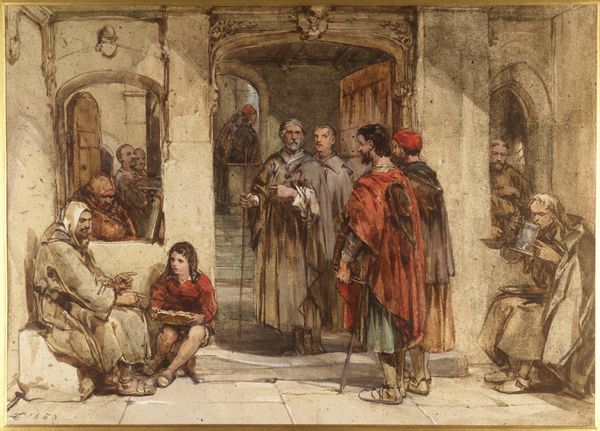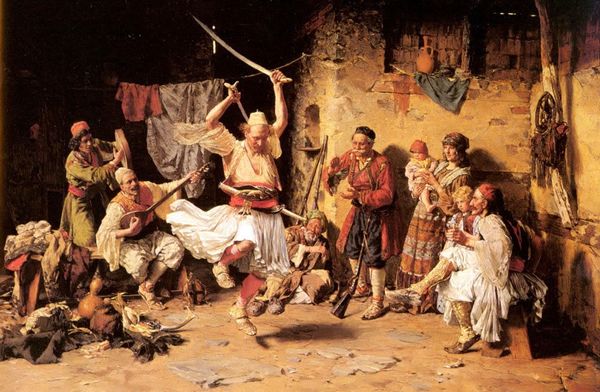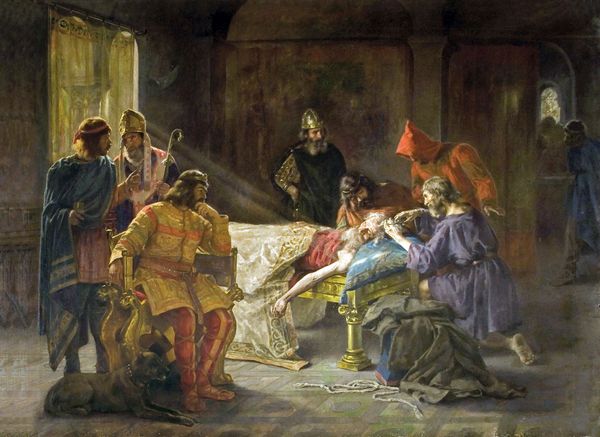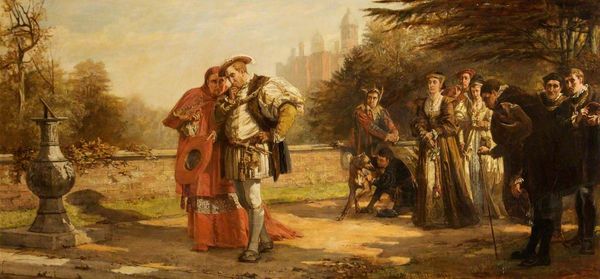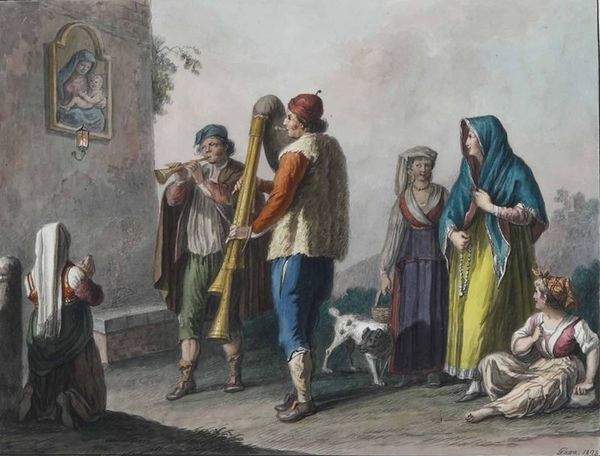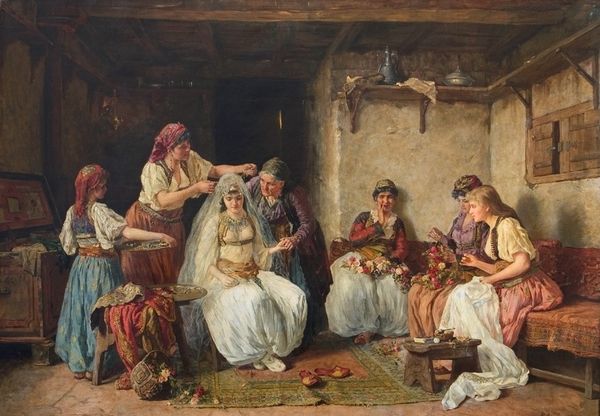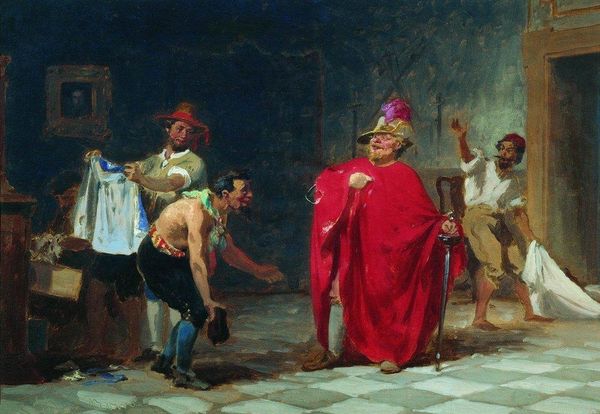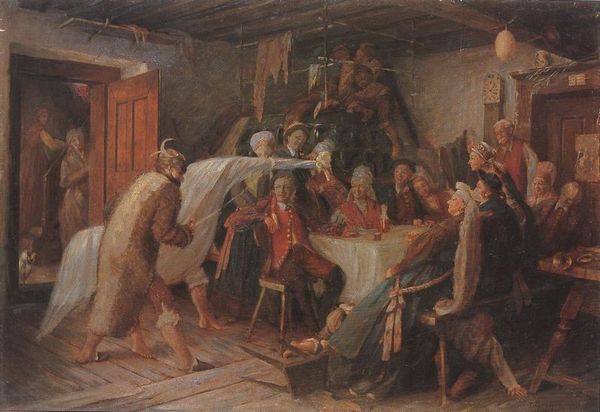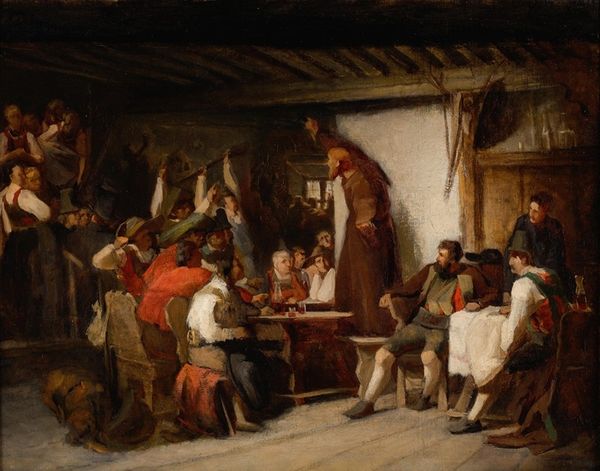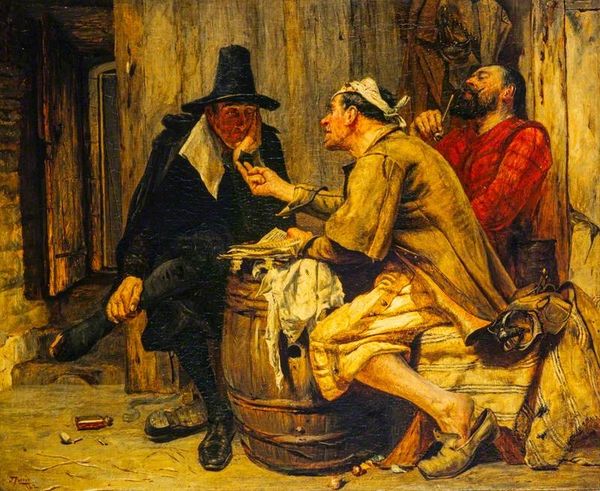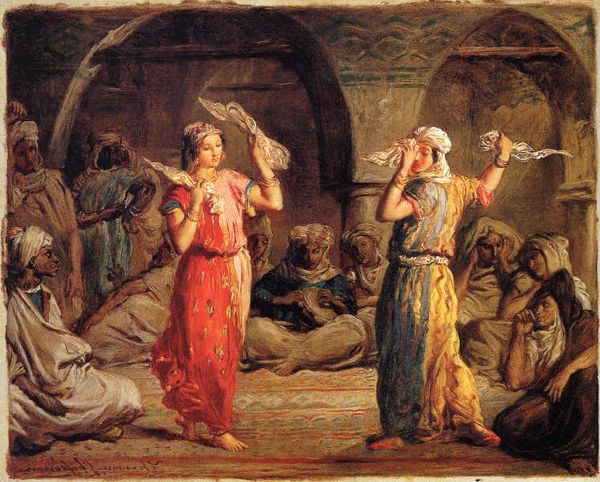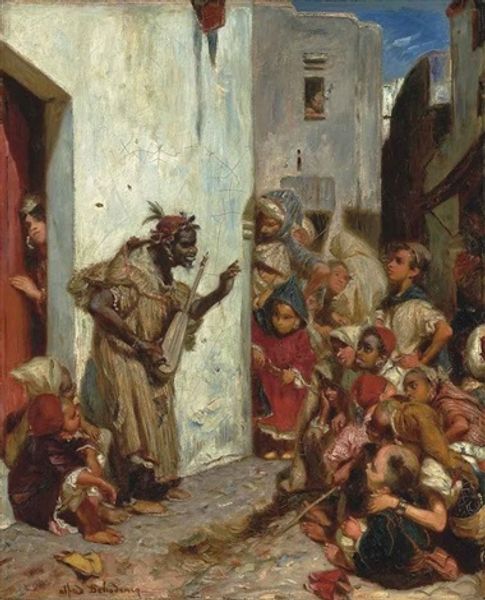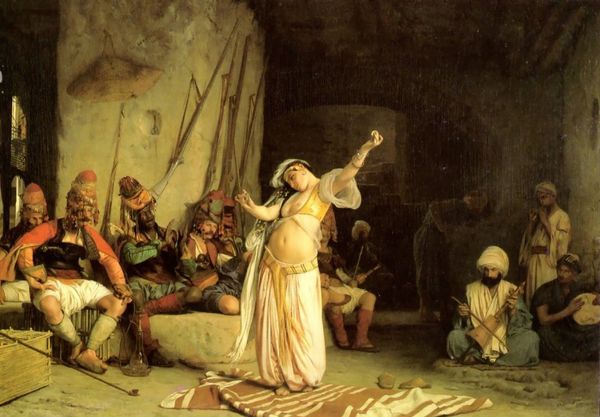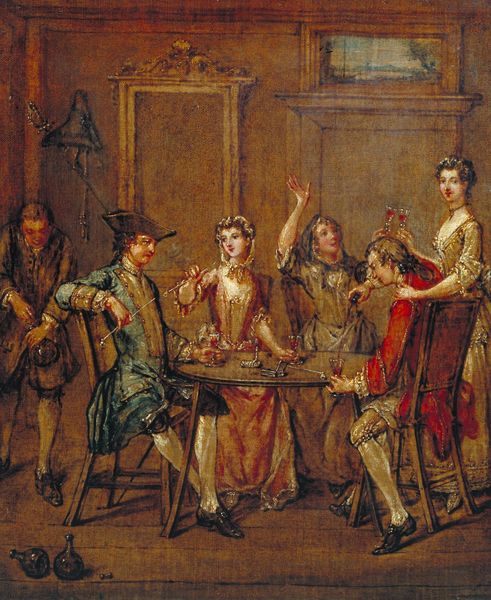
Copyright: Public domain US
Editor: Here we have Paja Jovanovic’s “The Fencing Lesson,” painted in 1884, using oil on canvas. It’s bustling! All the activity, the traditional clothing – it’s very engaging. What strikes you most about this piece? Curator: I’m immediately drawn to the materiality of this work. Consider the artist’s deliberate choice of oil paint to depict what seems like a very raw, communal scene. Oil allowed Jovanovic to create this rich impasto surface that mimics the rough-hewn walls in the background and, in contrast, it enables to render the clothing in such detail. Editor: The clothing definitely stands out! What do you think about it? Curator: Absolutely! Notice how the fabrics depicted—the heavy woolens, the delicate cottons—speak to a material culture shaped by local production but surely influenced by burgeoning trade routes of the late 19th century. This is an image that elevates folk traditions but, to me, questions its status. Is this purely for nationalistic expression, or is Jovanovic subtly commenting on how culture is constructed through what we make and consume? What do you think of his decisions? Editor: It is like there is a display of local artisanship that also idealizes something – the way they socialize for example, seems really masculine. Do you think that gender plays a role on who can learn such skills and why they are important in that cultural context? Curator: That is an excellent point! Reflecting on the materials and production of this image itself helps unveil so many assumptions. For instance, look how Jovanovic’s brushwork glorifies labor while, at the same time, his client were wealthy people who may had an issue with their privileged status. Editor: It’s really interesting to see it as a manufactured image after all. Now, thinking about how the materials were made, how long it took to finish the artwork, and also who purchased it. So much context comes from all of that! Curator: Exactly! Shifting our focus to materiality invites a richer understanding of artistic and cultural production.
Comments
No comments
Be the first to comment and join the conversation on the ultimate creative platform.
